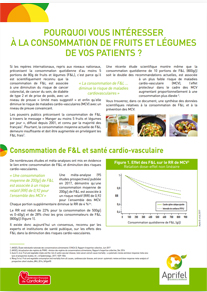Changes in nutrient and food intakes among WIC participants
In 2009, the composition and quantities of foods included in the Special Supplemental Nutrition Program for Women, Infants, and Children (WIC) food package were revised to more closely align WIC benefits with dietary recommendations: addition of wholegrain products, fruit and vegetable cash-value vouchers, reductions in milk, cheese and juice allowances, and restrictions on milk fat content1.
This cross-sectional study aims to use the National Health and Nutrition Examination Survey data (NHANES) to evaluate changes in nutrient and food intakes among children (n=1078, 24–59 months old) and women (n=1025, 19–50 years old) in households receiving WIC benefits before (2005–2008) vs. after implementation of the 2009 (2011–2014) food package revisions.
Changes in nutrient and food groups post-revision among children
The food package revisions were associated with an increased intake of fiber (10.6 g vs 11.6 g), vitamin E (4.3 mg vs 5.3 mg) and phosphorus (1040 mg vs 1100 mg) in children compared with the pre-revision sample. This greater fiber intake may be explained in part by increased consumption of whole grains (0.53 ounce-equiv. vs 0.82 ounce-equiv.) and legumes (0.05 cup-equiv. vs 0.08 cup-equiv.) that were also observed, as the 2009 food package revisions included more whole grains and a greater variety of protein foods such as beans and legumes. Also, a decreased intake of starchy vegetables (0.33 cup-equiv. vs 0.23 cup-equiv.) was observed in children.
This suggests that the increase in whole grain and legume varieties in the food package increased whole grain and legume consumption, which contributed to improved fiber intake.
Table 1: Dietary intake of children participating in the WIC program before and after the WIC food package revision.
| Nutrient/food category | Pre-revision (n=569) | Post-revision (n=509) | P value (significance) |
| Nutrient to increase
– Fiber (g) – Vitamin K (mg) – Calcium (mg) – Iron (mg) – Zinc (mg) |
10,6 2 104 936 11,8 8,6 |
11,6 2 058 985 11,8 8,1 |
0,004** 0,348 0,192 0,948 0,061 |
| Other nutrients of concern
– Vitamin E (mg AR) – Vitamin A (μg RAE) – Phosphorus (mg) |
4,3 547 1 040 |
5,3 562 1 100 |
<0,001*** 0,510 0,012** |
| Priority food groups
– Total vegetables (cup-equiv.) – Total starchy vegetables (cup-equiv.) – Legumes computed as vegetables (cup-equiv.) – Whole grains (ounce-equiv.) – Total fruits (cup-equiv.) – Total dairy (cup-equiv.) |
0,71 0,33 0,05 0,53 1,7 2,15 |
0,65 0,23 0,08 0,82 1,6 2,12 |
0,307 0,042* 0,013* 0,001** 0,788 0,869 |
*P<0.05; **P<0.01; ***P<0.01.
Changes in nutrient and food groups post-revision among women
Increased fiber intake was also observed for women (14.6 g vs 16.4 g) which may also be explained by increased consumption of whole grains (0.62 ounce-equiv. vs 0.89 ounce-equiv.) observed in post-revision even though it was not much significant.
Compared with the pre-revision sample, WIC women reported higher intake of sodium in post-revision (3096 mg vs 3342 mg).
Table 2: Dietary intake of women participating in the WIC program before and after the WIC food package revision.
| Nutrient/food category | Pre-revision (n=537) | Post-revision (n=488) | P value (significance) |
| Nutrient to increase
– Fiber (g) – Potassium (mg) – Calcium (mg) – Iron (mg) – Folate (μg) |
14,6 2 303 881 14,4 351 |
16,4 2 402 935 14,1 380 |
0,013* 0,145 0,157 0,642 0,112 |
| Nutrients to limit
– Added sugars (tsp-equiv.) – Saturated fat (%energy) – Sodium (mg) |
21,1 10,9 3 096 |
17,8 10,9 3 342 |
0,068 0,956 0,002** |
| Priority food groups
– Total vegetables (cup-equiv.) – Total starchy vegetables (cup-equiv.) – Legumes computed as vegetables (cup-equiv.) – Whole grains (ounce-equiv.) – Total fruits (cup-equiv.) – Total dairy (cup-equiv.) |
1,36 0,37
0,14 0,62 0,91 1,53 |
1,45 0,40
0,18 0,89 1 1,69 |
0,375 0,609
0,438 0,087 0,672 0,334 |
*P<0.05; **P<0.01.
In conclusion, the package revisions were associated with an increased fiber and whole grain intakes for both children and women. Improved nutrient intakes among children (vitamin E and phosphorus) and a shift to more legumes and less starchy vegetables were reported. No change in total fruit, whole fruit or fruit juice consumption was observed although the revisions included an incentive to purchase fresh fruits via new cash-value vouchers.
Recommendations to eliminate fruit juice and shift funds to the fresh cash-value vouchers2,3, are important policy considerations for future package modifications.
Jacqueline A. VernarelliDepartment of Public Health, Sacred Heart University, USA
References
1. Institute of Medicine (2006) WIC Food Packages: Time for a Change. Washington, DC: National Academies Press.
2. Ferris HA, et al. (2017) Time for an end to juice in the Special Supplemental Nutrition Program for Women, Infants, and Children. JAMA Pediatr 171, 509–510.
3. Nagata JM, et al. (2016) The option of replacing the Special Supplemental Nutrition Program for Women, Infants, and Children fruit juice supplements with fresh fruits and vegetables. JAMA Pediatr 170,823–824.
